The pig’s ear mushroom is an edible fungi species that appears in the summer and fall in primarily northern mountainous regions and the PNW. It is an oddly shaped mushroom that looks, well, a bit like a pig’s ear. Pig’s ears (Gomphus clavatus) are cousins to chanterelles and just as fun and delicious a find. Another name for this mushroom species is the violet chanterelle due to its lilac coloring. You may also hear it described as the clustered chanterelle. However, this mushroom is only a distant cousin to the chanterelle.
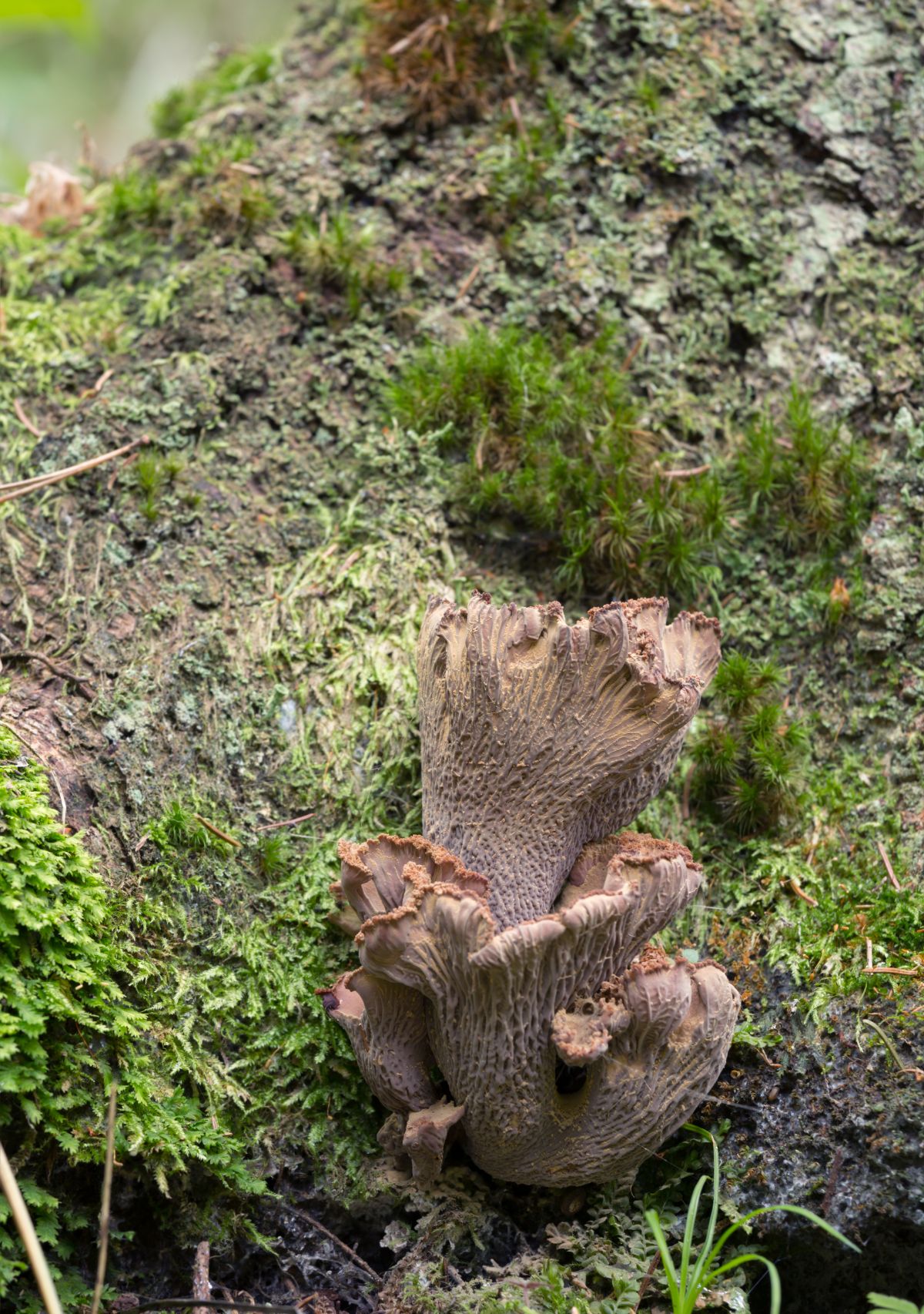
Jump to:
All About Pig’s Ear Mushrooms
The pig’s ear is a somewhat uncommon species and is very overlooked by foragers and mushroom lovers alike. Partly, it doesn’t get much attention because it isn’t common. But, even in areas where it is more prevalent, it is ignored for more popular or abundant species. Many people are surprised to learn this odd-looking fungus they’ve been walking by for years is considered a choice edible by many.
Sadly, this species is facing a crisis in parts of the world due to habitat loss. Its preference for montane conifer old-growth forests means it doesn’t have a vast habitat to start with, and it is under threat as more forests are cut down.
In North America, it is still common enough that it isn’t critically endangered. But, due to its rarity and habitat specificity, in the Pacific Northwest, it is being monitored. The Northwest Forest Plan, which encompasses most of the PNW, lists Gomphus clavatus as a Category B concern. This means it is rare and needs watching, but no additional measures would be put in place because it is impractical. The report is super long but also quite interesting (relevant charts start on page 115).
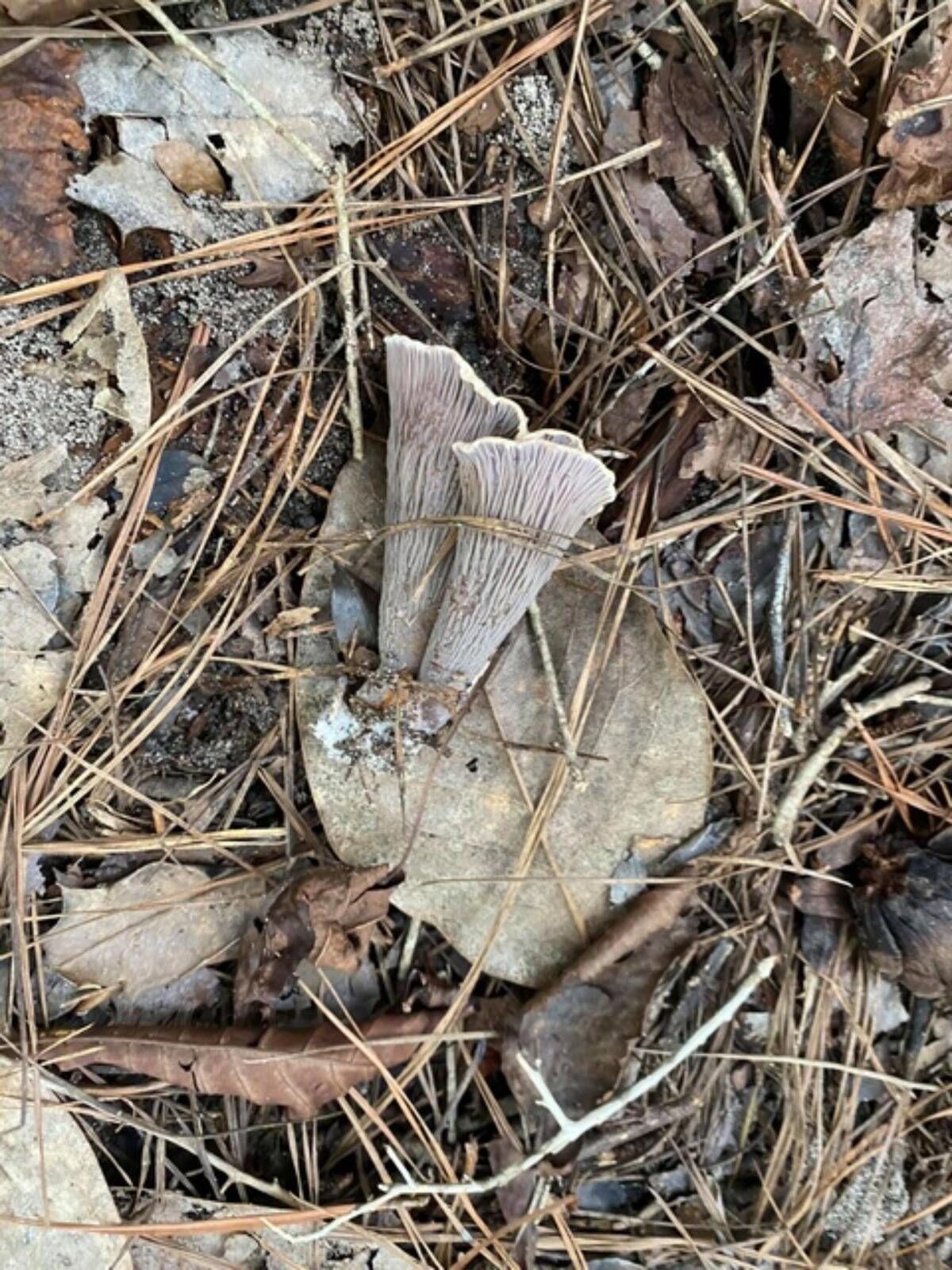
Pig’s ear is believed to be extinct on the British Isles from habitat loss and overforaging – it hasn’t been seen there since 1927. The pig’s ear is also listed as endangered across the European Union. It would benefit North Americans, for sure, to tread lightly with this species and be mindful of harvesting.
Pig’s ear mushrooms were first scientifically described in 1774 by the botanist Jacob Christian Schäffer. It’s been through quite a few name changes as experts debated which family it belonged to. For a long time, it was considered part of the Cantharellus (chanterelle) family. The pig’s ear only reached its current scientific name recently due to DNA analysis. It is the type species of the genus.
In Nepal, Sherpa peoples call the fungus Eeshyamo, which translates to “mother-in-law.” This fun common name refers to the mushrooms distinguishing size, as imposing as a mother-in-law in that culture.
Pig’s ear mushrooms are reported from Asia, Europe, and across North America, including Mexico and Canada.
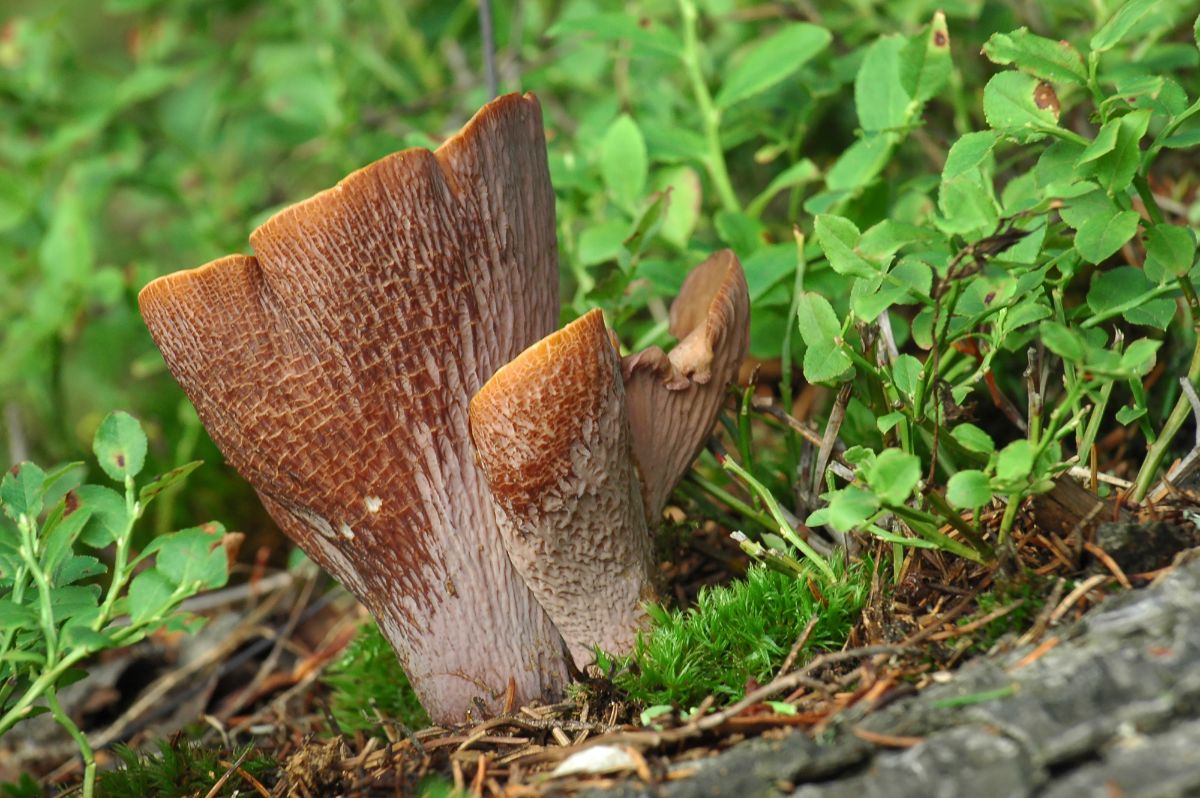
Pig’s Ear Mushroom Identification
Season
Summer and fall primarily; the season extends into winter in warmer regions.
Habitat
Pig’s ear mushrooms grow in conifer forests, preferring moist, shady spots with lots of deep forest debris and leaf litter. They especially like old-growth forests, primarily because that’s where the best shade and forest debris are too. These fungi grow from the ground and never from trees or logs.
They are more common in high elevations and montane regions, appearing with more frequency in locations above 2,000 feet.
The mushrooms grow singularly or in clusters or clumps. They’re also known to grow in fairy rings. They’re mycorrhizal (forming symbiotic relationships with trees) and known to associate with Douglas fir, spruce, and western hemlock.
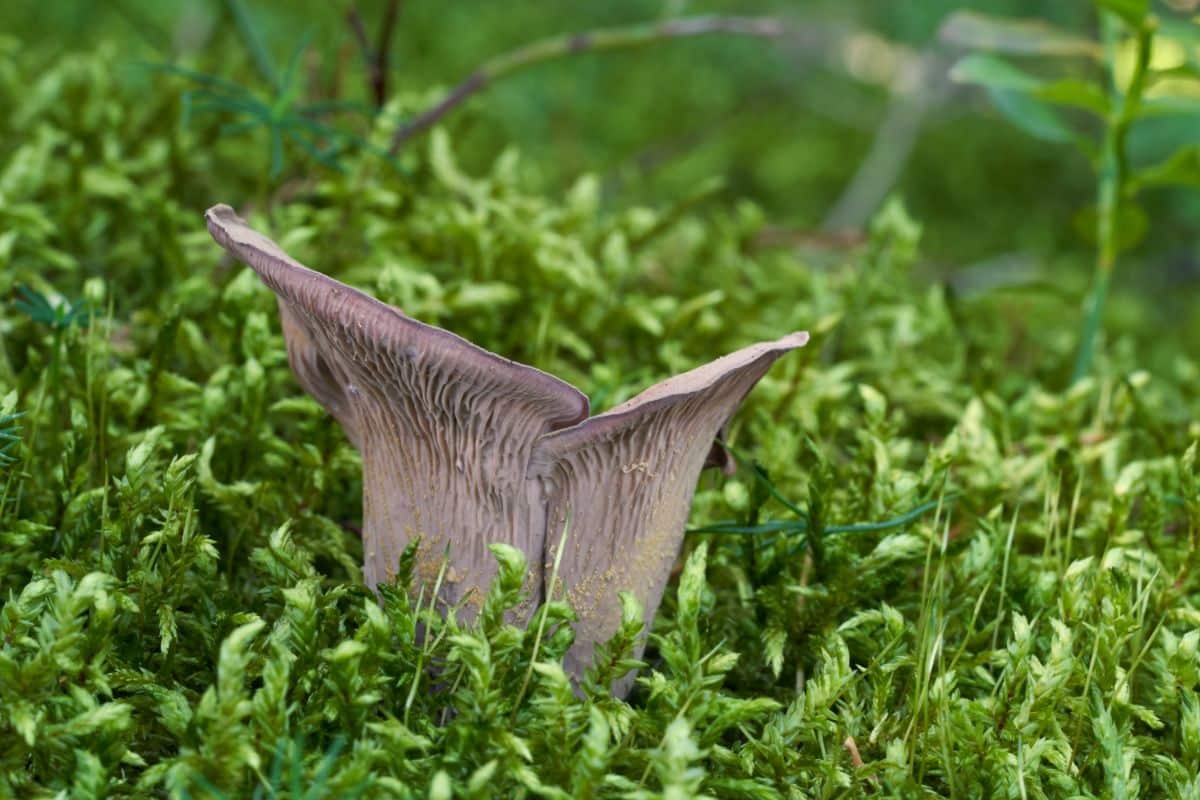
Identification
The shape of the pig’s ear mushroom morphs significantly over time. When it first emerges, it is club-shaped with a single cap. As it matures, it branches out to display several vase-shaped caps originating from a shared stem.
Pig’s ear mushrooms grow up to 6.25 inches wide and 6.75 inches tall, a significant size that makes them especially attractive as an edible species. The individual caps, in maturity, are fan-shaped with very wavy edges. The upper cap surface is violet to orange-brown in color and velvety smooth. It is covered in very fine hairs that give it the look and feel of felt. As the fungus ages, the orange-brown fades to light brown.
The mushroom is violet-purple on the underside and has prolific and distinctive ridges, wrinkles, and folds. It does not have gills or pores like many other mushroom species. As it matures, the coloring fades to brownish. The flesh of the pig’s ear is dense towards the center and thins out toward the edges.
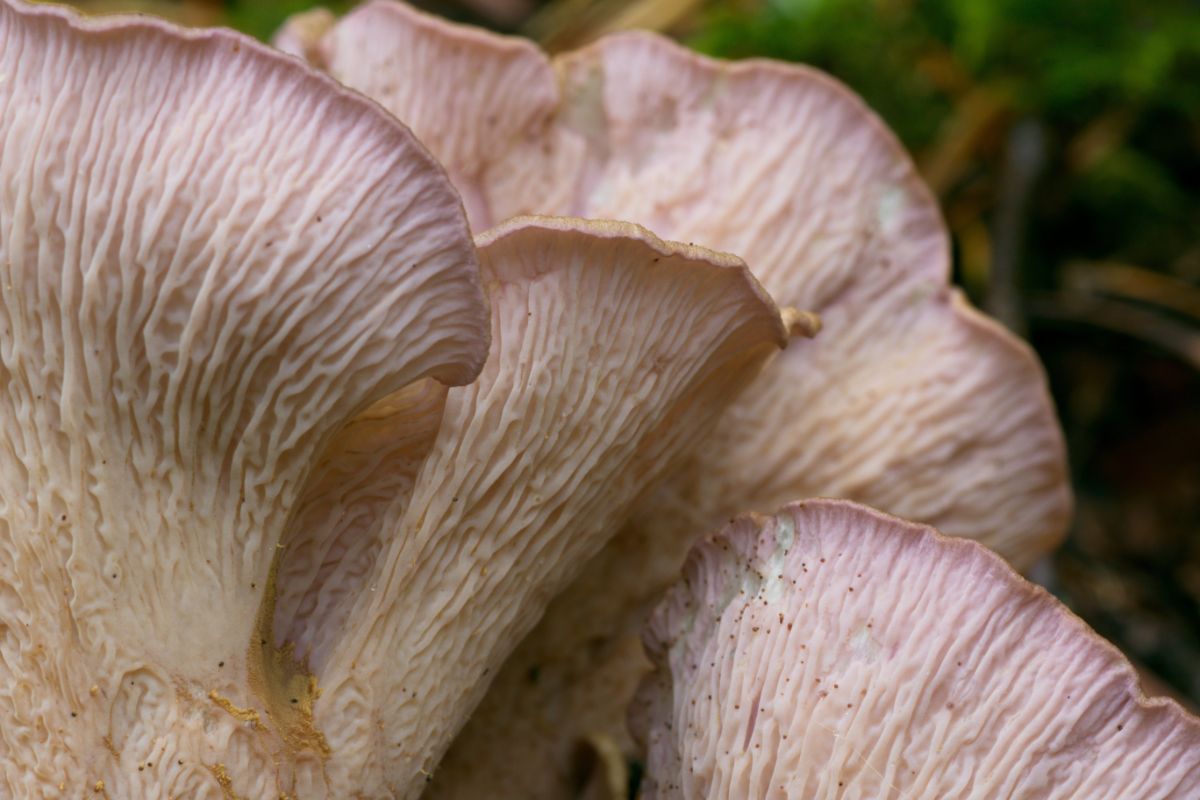
The pig’s ear stem is usually short and stubby but can get up to 4 inches tall. Like the outer surface, it is covered with fine hairs that give it a velvety feel. Several fruiting bodies are usually sprouting from a single stem.
The flesh of the pig’s ear mushroom is white, light pink to lilac, or may be lightly cinnamon-colored. The mushroom’s flesh is dense and solid; it doesn’t change color or stain when cut or handled. However, the outer skin of the fungus may bruise reddish-brown when handled.
Pig’s ear mushrooms don’t have a distinctive taste or smell – they are quite mild all around. The spore print is yellow or yellow-orange-brown.
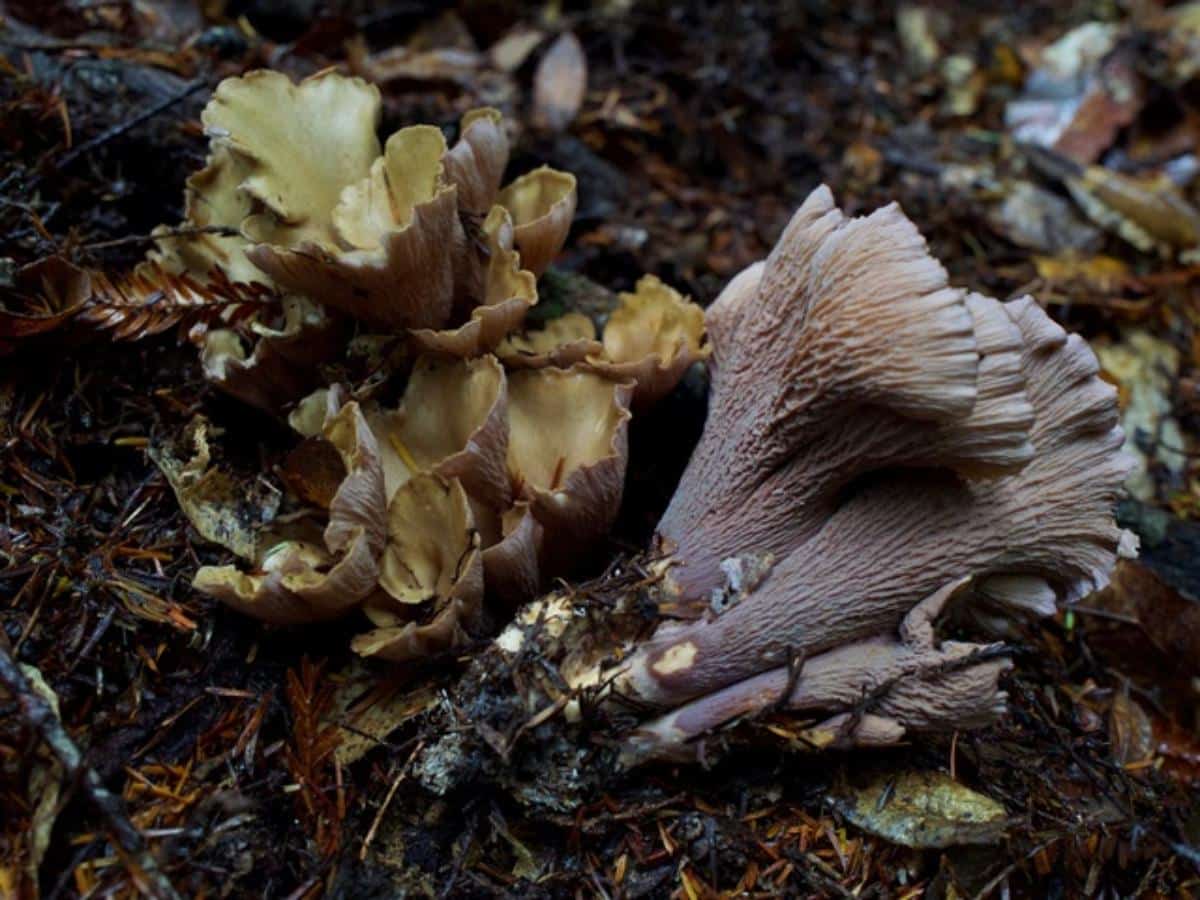
Identifying Features of the Pig’s Ear Mushroom:
- Caps funnel or fan-shaped
- Fruiting body features profuse ridges, folds, layers, and wrinkles.
- Outer (top) surface is orange-brown to violet, depressed in the middle, and covered in fine, velvety hairs. Color fades to tan with age.
- Cap edges are wavy and uneven.
- Underside is violet with deep veins running vertically down the sides. Color fades to brownish with age.
- Often more than one body arises from a single stem.
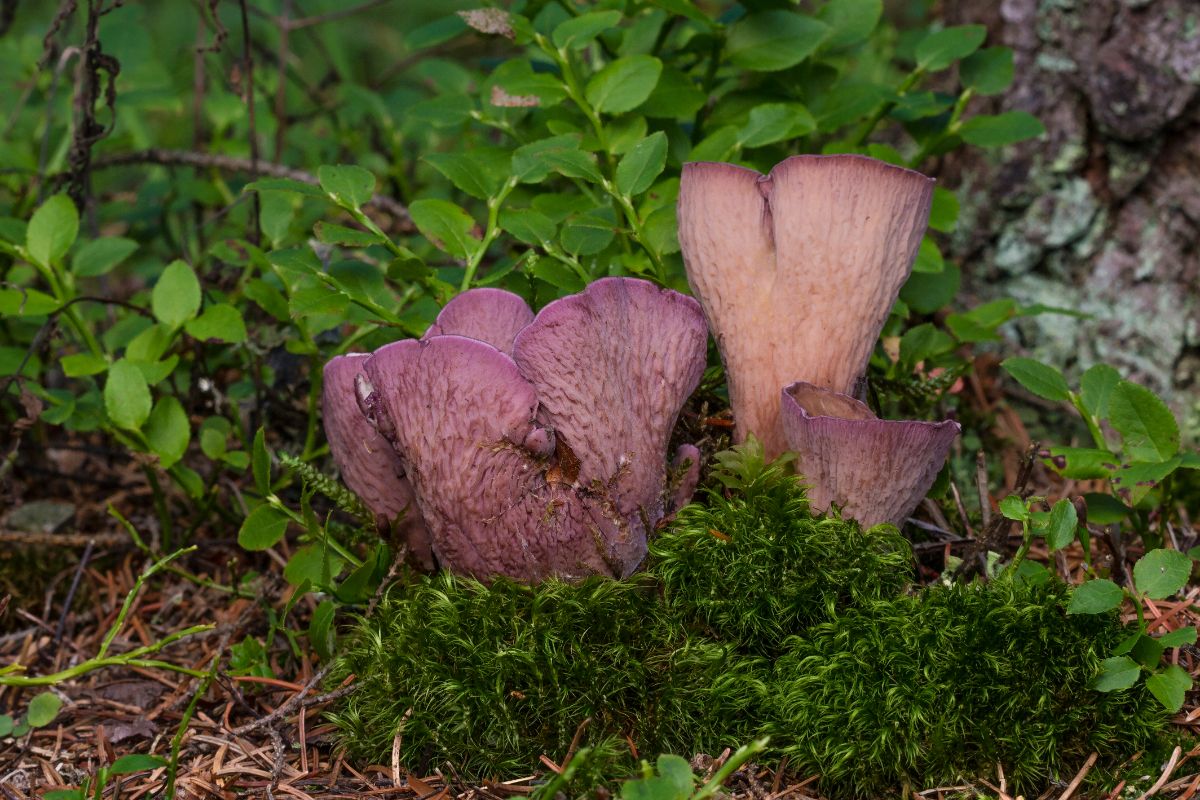
Foraging The Pig’s Ear Mushroom
As previously mentioned, pig’s ear mushrooms are facing extinction and habitat loss in other countries. It is a vulnerable species that primarily fruits in old-growth conifer forests. North America is not exempt from this caution; as more and more old-growth forests disappear, we might see significantly fewer specimens of this already uncommon species.
While we are advising caution and advocating sustainable foraging practices, harvesting this species is okay. Just don’t pick all you see, and be sure to leave at least half the patch to continue its natural life process.
Look for young specimens. Older pigs’ ears are usually infested with bugs, who absolutely love them. In fact, it is often challenging to find pig’s ear mushrooms without a plethora of bugs in residence. There is less likely to be terrible insect damage during cooler weather.
These fungi tend to bioaccumulate toxins, as many mushroom species do, so forage with caution in places where heavy metal contamination might be possible. A study of specimens collected in a specific region of Turkey showed high cadmium levels above the recommended intake.
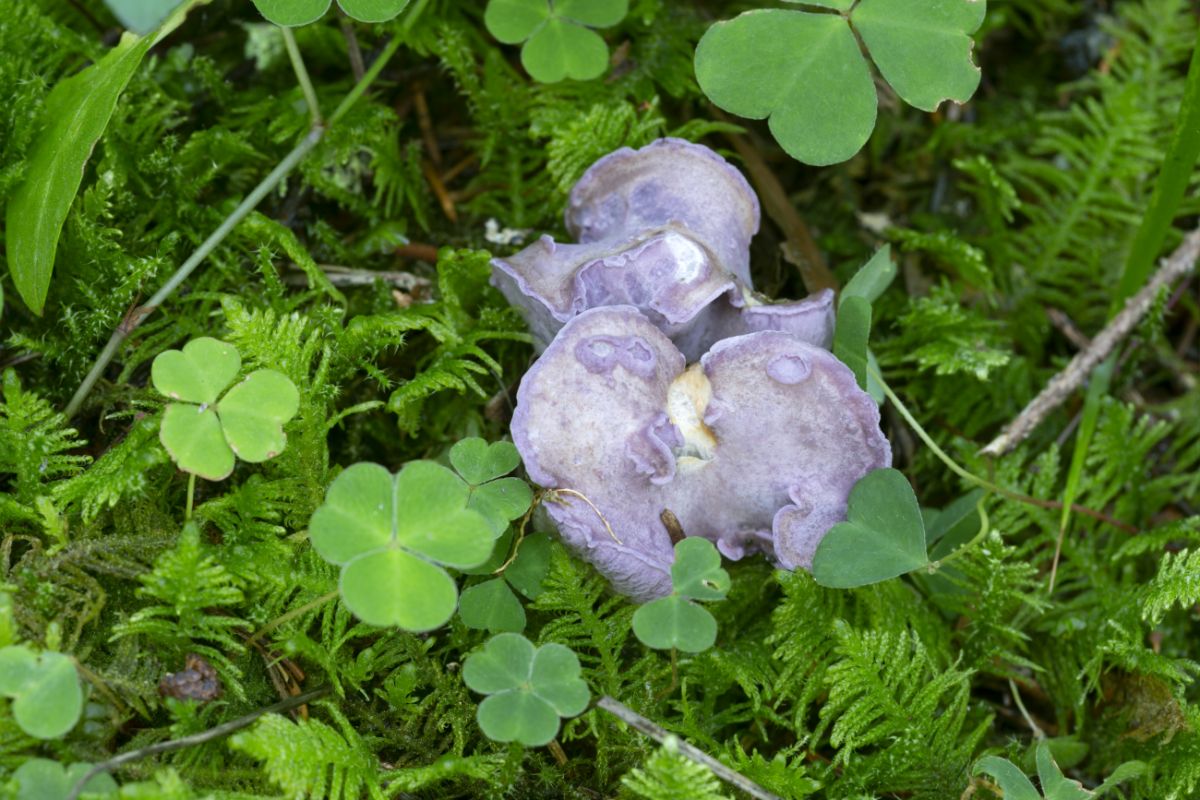
Pig’s Ear Mushroom Lookalikes
Pseudocantharellus pseudoclavatus (syn: Gomphus pseudoclavatus)
This species used to be in the Gomphus genus but was moved in recent years. It looks literally identical to the pig’s ear, which is problematic for identification. It is a rare species, though, so it isn’t encountered often. Or, it also may be heavily underreported because everyone thinks it is the true pig’s ear.
P. pseudoclavatus grows with conifer trees, though there are also reports of it growing with hardwood (specifically oak) trees as well. Some sources say you can tell the two species apart because one grows with conifers and the other with hardwoods, but then other sources report this pseudo species also grows with conifers. There is a lot still to be verified with this species, it seems.
It appears from the central states and westward. It is not found on the east coast. If you live in central or western states, you’ll have a challenge differentiating these two species without a microscope. Thankfully, it is edible.
Blue Chanterelle (Polyzellus multiplex)
The blue chanterelle only looks like a pig’s ear mushroom in shape and form. The coloring is quite different, and it’s easy to tell them apart with close inspection. Blue chanterelles are much darker, with violet coloring and overlapping, clustered growth.
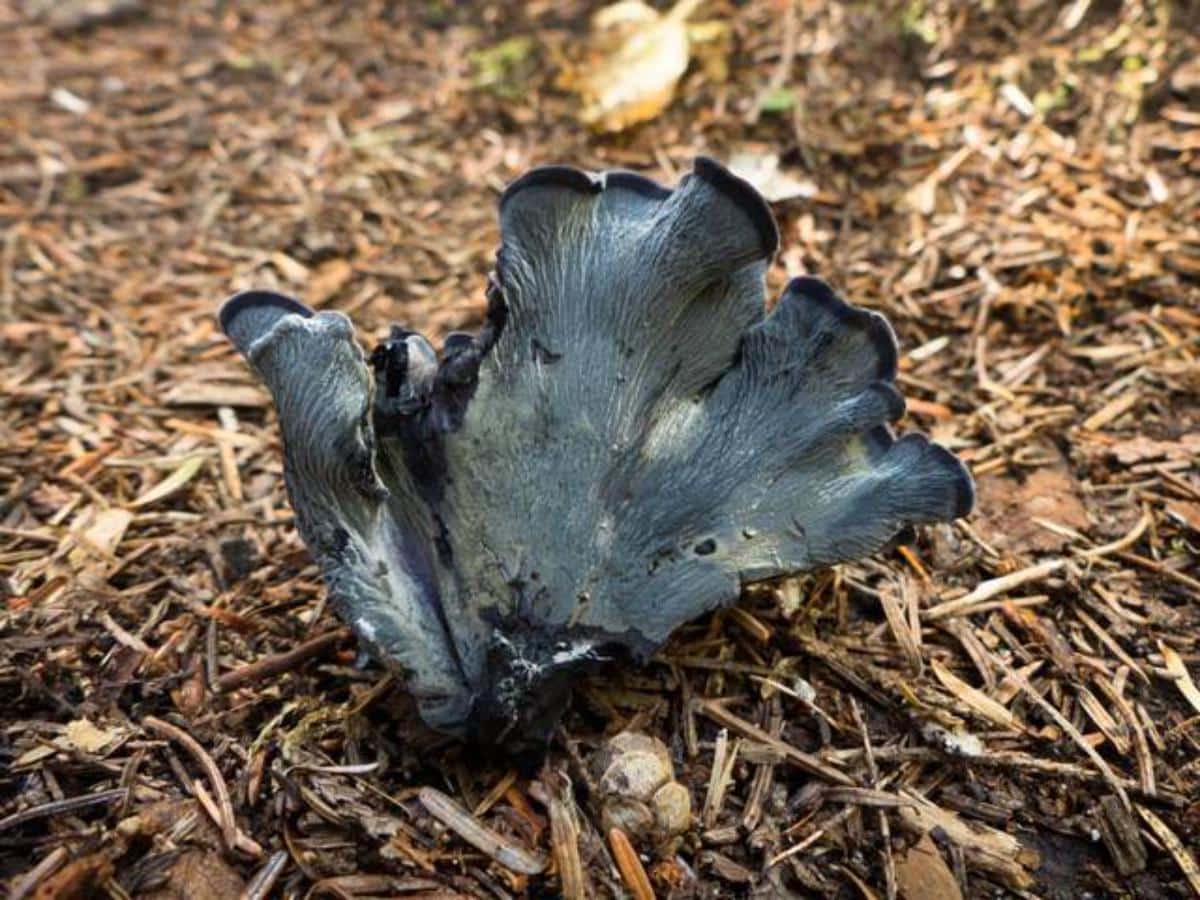
Scaly Vases (Turbinellus floccosus and Turbinellus kauffmanii)
The scaly vase is shaped similarly to the pig’s ear, but it has an orange-brown or orangish-red top and a lighter undersurface. T. kauffmani is pale tan on top, instead of orange, but still is easily discernible from the pig’s ear.
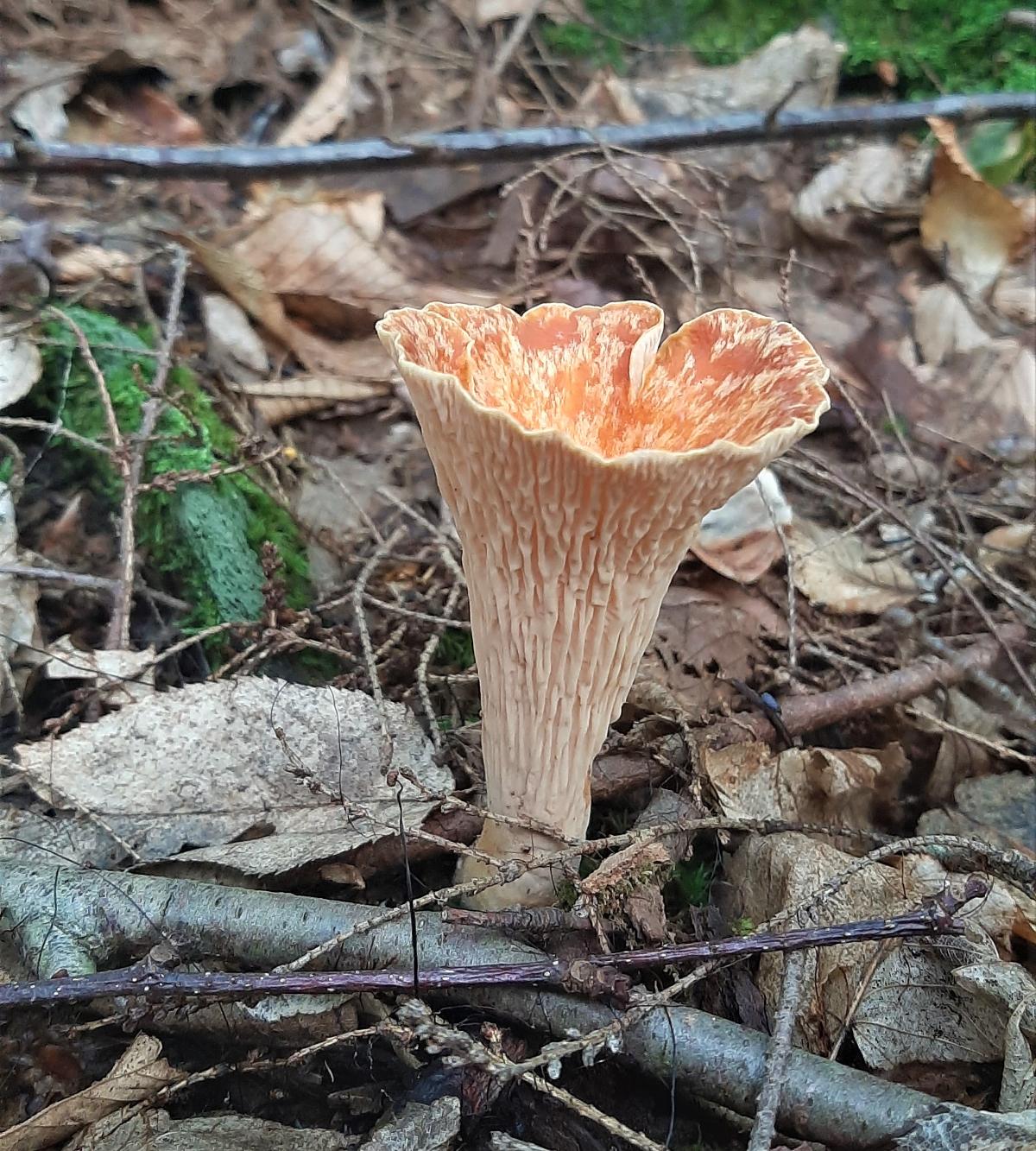
Cooking With The Pig’s Ear Mushroom
The pig’s ear mushroom is appreciated for its meaty texture and earthy flavor. Some people find it flavorless or bland, but its texture makes it an excellent choice for cooking. It is a highly regarded edible species for the indigenous Zapotec in Mexico and the Sherpa peoples in Nepal.
The dense flesh holds its shape during cooking, making it ideal for a wide array of cooking applications. Some favorite preparation methods include frying, pan sauteing, and boiling. They’re excellent in soups, stews, stir-fries, pasta dishes, and as a side dish for hearty meals. They’re an ideal meat substitute, too.
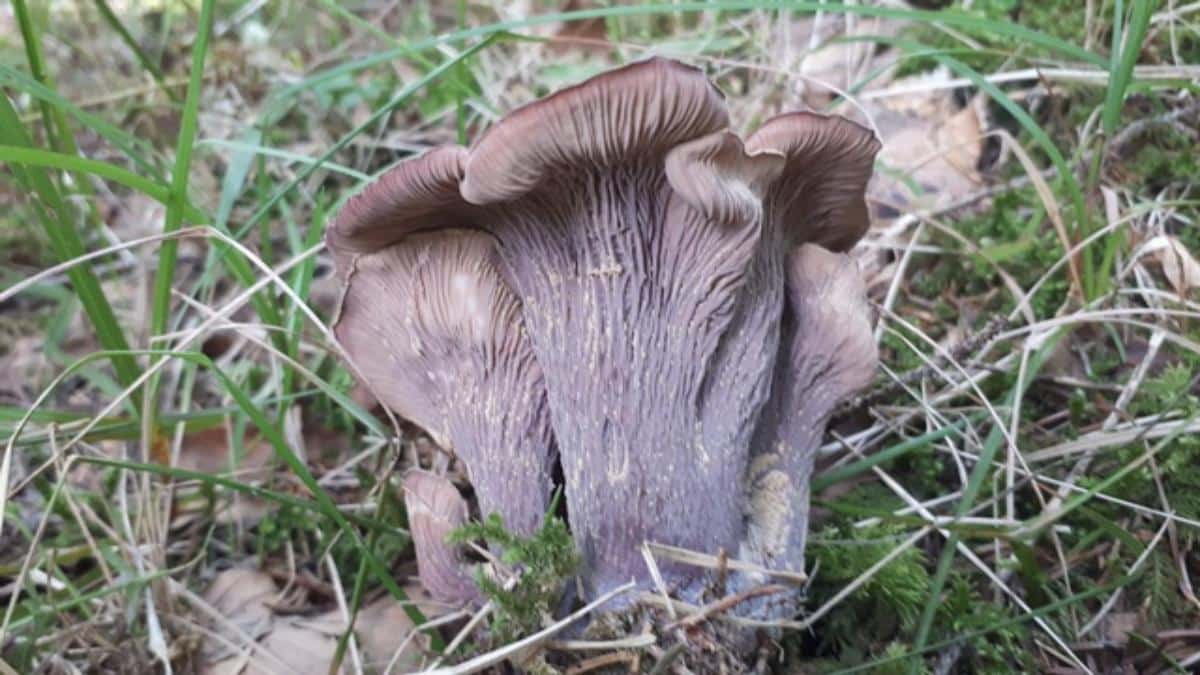
As the mushroom ages, the flesh turns bitter. To ensure you’re not preparing bitter mushrooms, do a taste and spit test to ensure the specimens are all still ideal for the plate. Unfortunately, pig’s ear mushrooms are also frequently infested by bugs. Bugs love pig’s ears!
If you see a lot of bugs, evidenced by holes in the firm flesh, soak the mushroom in cold water a couple of times. Change the water out, soak it a second time, and that should do the trick.
Pig ears dehydrate well and can also be cooked and frozen. They also are great marinated or smoked before cooking for extra flavor intensity.
Some people report experiencing gastrointestinal distress after eating pig’s ears. This is usually mild and doesn’t happen with everyone. As with any new-to-your-stomach mushroom species, consume cautiously and just eat a small amount. Stomach upset can happen with any mushroom species and varies highly with the individual. Some folks, sadly for them, are sensitive to chicken of the woods, lion’s mane, and shrimp of the woods.
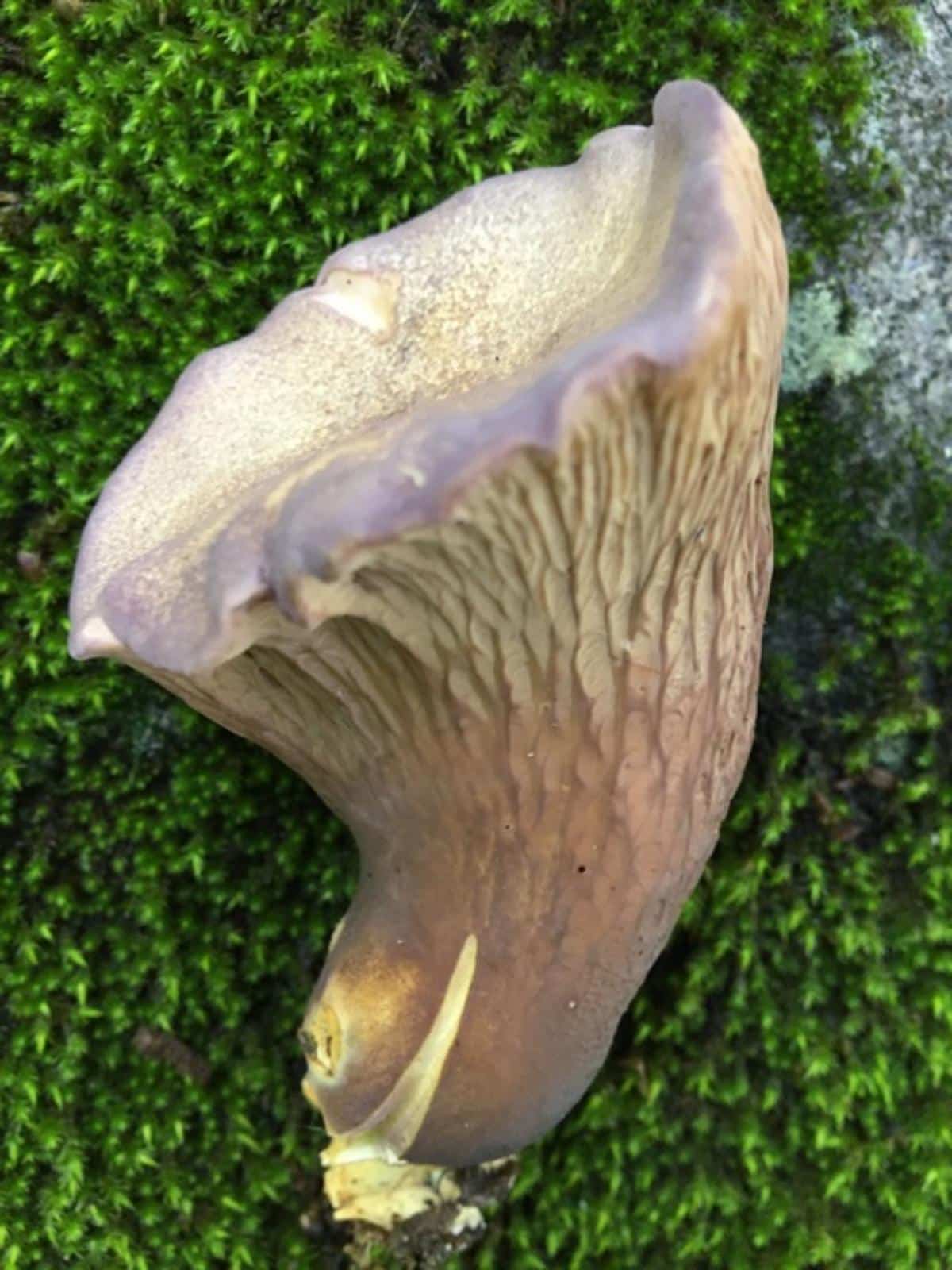
Pig’s Ear Mushroom Recipes:
Pig’s Ear Mushroom Common Questions
Are pigs ear mushrooms medicinal?
Pig’s ear mushrooms may be medicinal, although much more research needs to be done. A study in 2012 identified cancer fighting properties, but this has not been tested to determine it’s effectiveness with humans. Antioxidant and Cytotoxic Activity of the Wild Edible Mushroom Gomphus clavatus


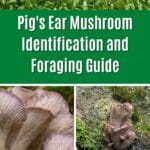

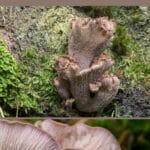
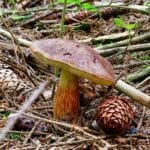
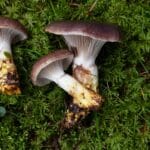
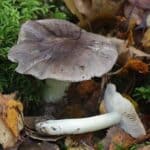

Leave a Reply